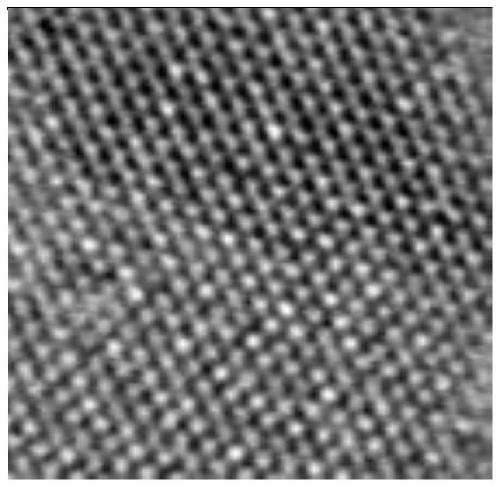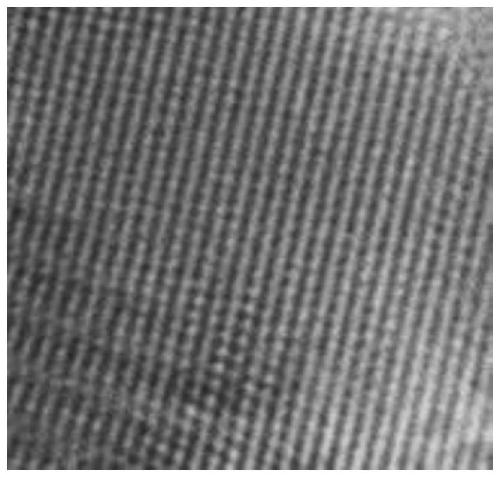A kind of preparation method of ordered mesoporous carbon catalyst for preparing p-aminophenol
A p-aminophenol and catalyst technology, which is applied in the field of nano-catalyst material preparation, can solve the problems of complex and lengthy reaction process, poor recycling performance, and stability to be improved, and achieve cheap and easy-to-obtain raw materials, developed specific surface area, and abundant raw materials Effect
- Summary
- Abstract
- Description
- Claims
- Application Information
AI Technical Summary
Problems solved by technology
Method used
Image
Examples
Embodiment 1
[0023] Using chitosan as the raw material, weigh 10g of chitosan and put it into a 100ml polytetrafluoroethylene lined reactor to ensure that the ratio of the solution volume to the tank volume is 5:10. Select cobalt oxide as the doping source, and cobalt oxide The mass ratio to chitosan is 1:10. After the surfactant P123 is dissolved, the mass ratio to chitosan is guaranteed to be 3:20. After the three are evenly mixed, put the reactor into a box-type heating box and heat it to the target temperature After being kept at a constant temperature of 190°C for 8 hours, it was cooled down to room temperature and filtered to obtain a dark brown solid, which was washed with deionized water and absolute ethanol until the filtrate was colorless, dried and ground. The cobalt-doped carbon-based catalyst precursor obtained above was put into a tubular calciner and carbonized at 850°C for 2h under the protection of a nitrogen atmosphere to obtain a cobalt-doped carbon catalyst with a vertica...
Embodiment 2
[0026] Using chitosan as the raw material, weigh 7g of chitosan and put it into a 100ml polytetrafluoroethylene lined reactor to ensure that the ratio of the solution volume to the tank volume is 7:10, and select Fe3O4 as the doping source. Its mass ratio to chitosan is 3:20. After the surfactants F127 and P123 are dissolved, ensure that the mass ratio of the mixture to chitosan is 3:20. After the three are evenly mixed, put the reactor into a box-type heating box and heat up After reaching the target temperature of 220°C, the temperature is kept constant for 6 hours and then cooled to room temperature, and a dark brown solid is obtained by filtration, and then washed with deionized water and absolute ethanol until the filtrate is colorless, dried and ground. The iron-doped carbon-based catalyst precursor obtained above is put into a tubular calciner and carbonized at 950°C for 1 h under the protection of a nitrogen atmosphere to obtain an iron-doped carbon catalyst with a strip...
PUM
| Property | Measurement | Unit |
|---|---|---|
| specific surface area | aaaaa | aaaaa |
| pore size | aaaaa | aaaaa |
| particle size | aaaaa | aaaaa |
Abstract
Description
Claims
Application Information
 Login to View More
Login to View More - R&D
- Intellectual Property
- Life Sciences
- Materials
- Tech Scout
- Unparalleled Data Quality
- Higher Quality Content
- 60% Fewer Hallucinations
Browse by: Latest US Patents, China's latest patents, Technical Efficacy Thesaurus, Application Domain, Technology Topic, Popular Technical Reports.
© 2025 PatSnap. All rights reserved.Legal|Privacy policy|Modern Slavery Act Transparency Statement|Sitemap|About US| Contact US: help@patsnap.com


